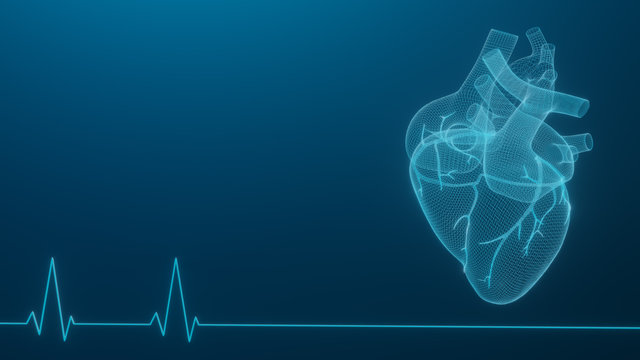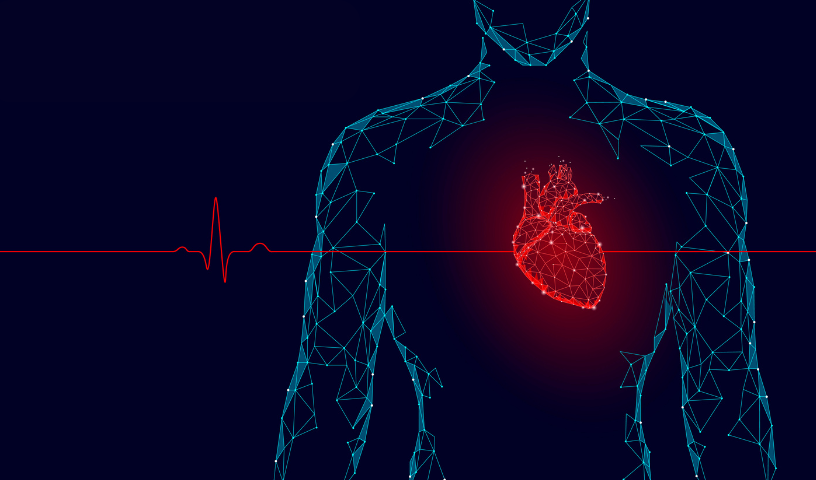Avoid heart disease with Cardiology care: A preventive strategy
Avoid heart disease with Cardiology care: A preventive strategy
Blog Article
Recognizing the Value of Cardiology in Modern Health Care Solutions
Cardiology plays a crucial function in contemporary health care, particularly as cardiovascular disease continues to be the leading root cause of death worldwide. Advancements in diagnostics and therapy have changed person care, allowing earlier treatments and enhanced outcomes. Additionally, the shift towards preventive cardiology equips people to handle their health and wellness proactively. As innovation continues to advance, the integration of cutting-edge remedies might even more redefine cardiology's effect on public wellness, triggering a more detailed exam of emerging trends and their implications.
The Prevalence of Heart Problem and Its Effect On Public Health And Wellness
Although heart illness stays the leading cause of death globally, its impact expands far beyond private patients to influence public health and wellness systems and economies. The high occurrence of cardiovascular disease places a significant strain on medical care resources, necessitating boosted funding for prevention, recovery, and therapy programs. Public health and wellness initiatives have to address danger factors such as obesity, cigarette smoking, and sedentary way of livings, which add considerably to the climbing occurrence of heart conditions.Moreover, the financial concern associated with heart disease is tremendous, including not only direct medical prices however likewise indirect expenditures connected to shed performance and premature mortality. Communities face obstacles in handling these costs, typically resulting in differences in healthcare accessibility and results. As the populace ages and lifestyle-related dangers remain to intensify, the necessity for effective cardiology interventions comes to be vital. Dealing with heart condition is not just an issue of private wellness but also an important public wellness top priority.
Developments in Heart Diagnostics and Imaging Techniques
Recent improvements in cardiac diagnostics and imaging strategies have actually transformed the area of cardiology, improving the capability to spot and keep an eye on cardiovascular disease. Strategies such as heart MRI, CT angiography, and echocardiography have ended up being progressively innovative, giving detailed pictures of cardiac frameworks and features. These techniques enable the very early recognition of conditions like coronary artery condition, heart failing, and valvular disorders.Moreover, improvements in non-invasive diagnostics, such as wearable innovation and remote tracking tools, have empowered individuals and doctor. These devices help with real-time monitoring of heart rhythms and various other important signs, bring about prompt interventions. In addition, expert system is being integrated into imaging evaluation, enhancing accuracy and effectiveness in medical diagnosis.
Innovations in Treatment Choices for Heart Conditions
Recent innovations in cardiology have actually resulted in substantial developments in therapy choices for heart disease. These consist of advanced surgical methods that boost procedural results and arising medications that provide brand-new opportunities for therapy. As the area evolves, these technologies play an important role in boosting client care and end results.
Advanced Surgical Techniques
Developments in medical strategies have transformed the landscape of cardiology, offering new hope for patients with heart problems. Minimally invasive procedures, such as catheter-based treatments, have actually considerably lowered recovery times and health center keeps. Techniques like robotic-assisted surgical procedure enhance accuracy, allowing cosmetic surgeons to browse complex anatomical frameworks with better precision. Additionally, innovations in imaging modern technology facilitate real-time visualization throughout treatments, improving outcomes. Transcatheter aortic shutoff replacement (TAVR) exemplifies a development in dealing with aortic constriction, allowing valve substitute without open-heart surgical procedure. Furthermore, hybrid strategies that combine surgical and catheter-based techniques supply tailored services for numerous heart issues. These advanced surgical techniques not only boost client safety however also expand therapy alternatives, highlighting the important function of development in modern cardiology methods.
Arising Medications and Treatments
As the landscape of cardiology continues to progress, arising treatments and medicines play a crucial role in enhancing treatment choices for heart disease. Technologies such as unique anticoagulants and progressed lipid-lowering agents have actually changed the monitoring of cardiovascular conditions, substantially minimizing client morbidity and mortality. Additionally, the growth of gene treatments and regenerative medication offers promising opportunities for dealing with conditions previously considered incurable. Scientific tests are continuously revealing the efficacy of these therapies, pressing the limits of traditional treatments. The assimilation of electronic health technologies promotes customized medicine, enabling for tailored therapy strategies based on genetic and way of life factors. Jointly, these advancements highlight the dynamic nature of cardiology, boosting individual end results and redefining standards of care in contemporary healthcare.
The Duty of Preventive Cardiology in Patient Care
Preventive cardiology plays a necessary function in patient care by focusing on the recognition of danger elements that add to heart problem. With way of living alteration strategies and very early detection methods, medical care service providers can properly lower the incidence of cardiovascular events - Cardiology. This positive approach not just boosts person results yet additionally promotes lasting health
Threat Aspect Identification
While cardio diseases stay a leading reason for morbidity and death worldwide, effective danger variable identification acts as a foundation of preventive cardiology. Recognizing risk factors such as high blood pressure, diabetes mellitus, family, and hyperlipidemia background is essential for very early treatment. Health care experts use various evaluating approaches to evaluate these variables, enabling tailored precautionary actions. Additionally, comprehending an individual's way of living options, such as smoking cigarettes and physical lack of exercise, even more informs danger assessments. This extensive assessment allows clinicians to develop customized treatment strategies intended at mitigating dangers. By prioritizing risk variable recognition, healthcare systems can enhance client results and decrease the general problem of cardio illness, eventually adding to boosted public health and wellness strategies and resource allocation.
Way Of Living Adjustment Techniques
A plethora of research studies highlights the essential duty of lifestyle alteration strategies in reducing cardiovascular condition danger. These methods encompass nutritional modifications, boosted physical activity, cigarette smoking cessation, and weight administration. By adopting a heart-healthy diet regimen rich in fruits, vegetables, entire grains, and lean proteins, individuals can reduce cholesterol degrees and blood stress. Routine exercise strengthens the heart and improves overall cardio health. Additionally, quitting smoking significantly minimizes the threat of heart condition see it here and improves recuperation rates for those with status quo. Weight administration even more adds to cardio health by alleviating various other danger aspects such as diabetic issues and hypertension. Executing these way of living changes not just advertises specific health however likewise offers as a keystone of preventive cardiology in individual care.
Early Discovery Strategies
Way of living adjustments substantially add to minimizing cardio condition threats, yet they are most reliable when matched with very early detection techniques. Precautionary cardiology emphasizes the value of determining potential heart problems before they rise into serious problems. Methods such as blood stress monitoring, cholesterol screening, and progressed imaging modern technologies like echocardiograms play crucial functions in evaluating cardiovascular wellness. Biomarkers and hereditary testing also improve the accuracy of very early discovery, permitting for tailored preventive methods. Routine cardiac risk analyses encourage healthcare providers to intervene proactively, potentially protecting against heart attacks and strokes (Dr Garcia). By integrating these early detection techniques right into regular treatment, individuals can take advantage of timely lifestyle interventions and targeted treatments, ultimately enhancing and boosting outcomes lifestyle
Integrating Technology Into Cardiology Practices
As improvements in modern technology proceed to reshape numerous fields, the assimilation of ingenious devices and systems right into cardiology methods has ended up being necessary for improving patient treatment and outcomes. Telemedicine systems allow cardiologists to check patients from another location, boosting access to care while reducing the problem on healthcare centers. Wearable devices, such as smartwatches, allow continual heart rate tracking, notifying both medical professionals and individuals to prospective problems in real-time. Furthermore, expert system (AI) is being utilized to analyze huge quantities of heart data, aiding in very early medical diagnosis and personalized therapy strategies. Advanced imaging strategies, including 3D echocardiography, improve visualization of heart structures, resulting in much more precise treatments. Digital wellness documents (EHRs) simplify client information monitoring, guaranteeing that cardiologists have instant access to essential data. Together, these technological developments are changing cardiology, advertising positive administration and enhanced wellness results for clients with cardio problems.
The Relevance of Person Education and Engagement
Patient education and interaction play a pivotal visit role in the monitoring of cardio health and wellness. By equipping clients with knowledge about their conditions, therapy options, and way of living adjustments, doctor equip people to take an energetic function in their care. This positive technique can result in enhanced adherence to suggested drugs, nutritional modifications, and workout programs, ultimately decreasing the danger of complications.Engagement also cultivates a strong patient-provider connection, encouraging open communication and count on. When patients really feel notified and included, they are much more likely to voice issues and ask concerns, which can bring about far better medical end results. In addition, instructional resources, such as workshops or electronic systems, can boost understanding and advertise self-management methods. Generally, prioritizing client education and learning and involvement is important for boosting cardiovascular health and wellness, improving quality of life, and decreasing healthcare prices connected with heart diseases.
Future Fads in Cardiology and Their Possible Effect

Often Asked Inquiries
What Way Of Living Modifications Can Lower Heart Illness Danger?
The present question addresses way of living modifications that can substantially lower cardiovascular disease danger. Cardiologist near me. Taking on a balanced diet, participating in routine exercise, keeping a healthy weight, managing anxiety, and staying clear of tobacco can significantly improve cardiovascular health
Just How Can I Acknowledge Very Early Indicators of Heart Troubles?
Acknowledging early indicators of heart issues includes monitoring signs such as breast pain, shortness of breath, exhaustion, and irregular heartbeat. Prompt awareness of these signs can trigger essential medical evaluation and treatment for far better end results.
What Are the Distinctions Between Cardiologists and Cardiac Surgeons?
The differences between cardiologists and cardiac specialists depend on their functions; cardiologists mainly identify and handle heart problems through non-invasive techniques, while cardiac doctors do medical treatments to fix architectural heart issues. Each plays a vital, distinct function.

Exactly how Frequently Should I Obtain My Heart Wellness Checked?
The frequency of heart checkup differs based upon private danger variables. Typically, adults should undertake evaluations every one to two years, while those with status quo may need even more constant evaluations as recommended by medical care professionals.
What Duty Does Genetics Play in Heart Illness Threat?
Genes considerably affects heart disease danger, with familial patterns suggesting acquired conditions. Certain genes can predispose individuals to high blood pressure, cholesterol concerns, and other cardio troubles, highlighting the value of hereditary testing in assessing heart wellness. Heart illness remains the leading reason of fatality around the world, its influence extends far past individual patients to influence public health systems and economies. Public health and wellness efforts need to resolve risk aspects such as weight problems, smoking cigarettes, and sedentary way of livings, which contribute greatly to the climbing occurrence of heart conditions.Moreover, the financial burden connected with heart illness is immense, incorporating not just straight medical costs look at here yet also indirect expenses connected to lost performance and early death. Preventive cardiology plays a necessary duty in person care by concentrating on the recognition of danger variables that add to heart illness. Fabricated intelligence (AI) and machine knowing are enhancing diagnostics and client monitoring, making it possible for very early detection of heart conditions. The differences in between cardiologists and heart specialists exist in their roles; cardiologists largely handle and identify heart problems through non-invasive methods, while heart specialists execute surgical treatments to correct architectural heart issues.
Report this page